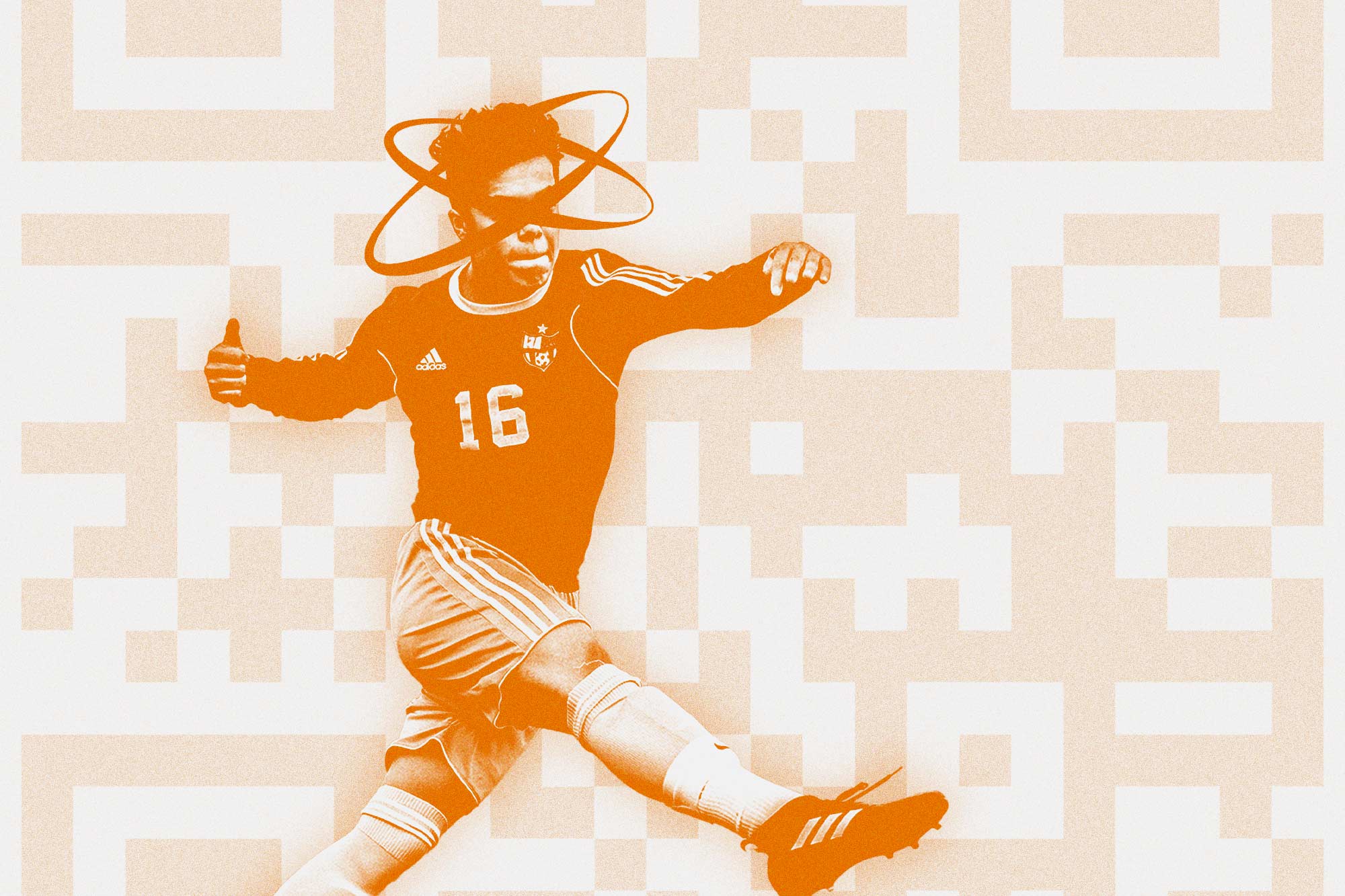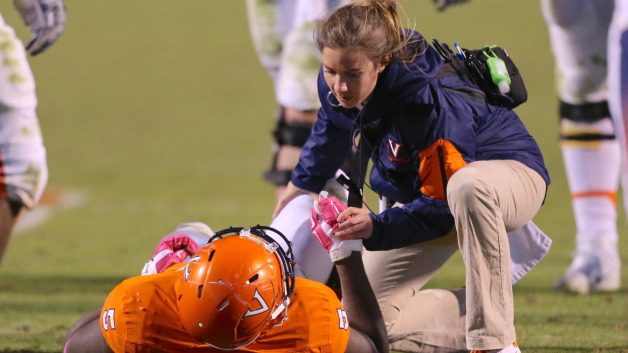A University of Virginia graduate student has devised a way to streamline student-athletes’ concussion testing so efficiently that it has been adopted by UVA Athletics and soon will be offered as a tool to local high schools.
The innovation has trimmed the typical concussion assessment to as little as five minutes, compared to the previous 20 minutes. To do that, doctoral student Cat Donahue converted paper documents to digital records and created a digital assessment tool to speed up not only the initial, or baseline, concussion assessment, but also the assessment of an injured athlete.
“Everything was stored in a secure location, but it was all on paper,” Donahue said. “Being able to digitize all that allowed us an opportunity to do research more efficiently. Once it was all in a central location, that was the point where I wanted to create a way for future data to be added automatically.”
Just about all local student-athletes, both at UVA and in local high schools, must participate in time-consuming preseason concussion assessments. Later, if an athlete is injured, athletic trainers or doctors can see how the athlete performs on the same assessment compared to the preseason score. That helps determine whether an athlete suffered a concussion, and when a concussed athlete can safely return to play.






